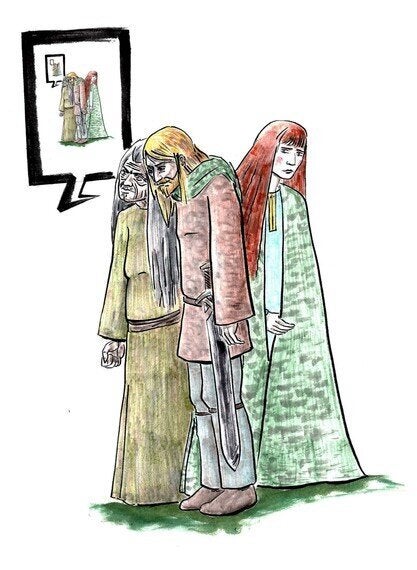I caught up with artist Lefteris Yakoumakis whose fascination with Icelandic culture and landscape has drawn him back again and again to the small town of Siglufjörður in the country's far north. In our interview, he talks of the changes he's seen in the region in recent years, and how the environment has influenced his own work.
What prompted your first visit to Iceland in 2007?
Over the years I've been asked why many times and have come up with various answers. As a boy my imagination was captivated by the Vikings or I'd seen the film 101 Reykjavik and became curious, etc. Looking back now I have to simply admit it was my girlfriend's idea. But once I got there I was fascinated by its diverse yet austere landscape as well as the scarcity of its population. We'd drive for hours in open plains, heavy sky above us, mountains in the distance and not a car in sight. That was of course nine years ago. Iceland's far busier now.
Then in 2010 I had the time and money to attend a couple of residency programmes. During my first trip to Iceland Tröllaskagi was the region I liked and wanted to revisit the most. Its sharp mountains towering over small fjords have a mythical, epic feel. Herhúsið was the only residency in the region at the time so I applied. I applied for December in order to challenge myself to withstand the solitude and to see if I'd enjoy staying in Iceland in the wintertime. I also wanted hide for a while in an icy sanctuary and clear my mind. Five days after my arrival I found myself drunk at a local artist's house so my lonely winter explorer fantasy was ruined! However, hiking the neighbouring mountains and valleys and taking long night walks when the weather permitted it I found the solitude and inspiration I was looking for. At the same time I made good friends that gave a voice to what before had seemed a magnificent yet silent landscape.
Some of your experiences made their way into '55 Ways to Pronounce the Word Siglufjörður'. Tell us more about the book.
The book is the product of my fourth visit to Iceland, my first prolonged stay in Siglufjörður. I lived in Siglufjörður from August 2013 to March 2014 working for a fisherman, bating long-line. I was working long excruciating hours but my job put bread on the table and also gave me a sense of belonging. Having neither the time nor the space to paint I had to reinvent myself as an artist. I started drawing with coloured markers and Chinese ink on small format paper. By the end of the winter I had done 55 drawings that I decided to collect in a book. I wrote short stories recording my experience to accompany the drawings. The stories range from everyday life to local myths but ethical and political issues are in some cases their thematic undercurrent. To better reflect my experience the texts in the book are in Greek and Icelandic. There's also a digital English version online that the reader can access by scanning QR codes at the beginning of each chapter in the book. I run a successful crowd-funding campaign in the summer of 2014 and finally published the book tin September of the same year. I had a lot of help from friends both in Iceland and Greece with the campaign and the book itself and felt very lucky to realise this dream.

Lefteris Yakoumakis, Cover illustration to '55 Ways to Pronounce the Word Siglufjörður'
I was struck by the story in the book about the young French traveller, who visits Siglufjörður and writes in his journal that he has found in the landscape of Tröllaskagi 'what I've always been looking for'. You've now spent some time living in Siglufjörður. What have you found here?
I've found sanctuary, a home away from home when I most needed it. I consider my friends in Siglufjörður to be my second family. But reflecting on the Frenchman's story I have this to say: living under Siglufjörður's mountains, walking the coast, gazing at the ocean, spending my days in this primordial landscape is nothing less than empowering. I've met many people, like you and me, who've felt the impulse to keep returning there or chose to make their home there. The Frenchman chose to die there. I think I can now understand why.
How has your experience working in the fishing industry in Siglufjörður informed your appreciation of the environment?
So far I've found myself working in two different aspects of the fishing industry. At a small business, for Siggi the fisherman, and then at a large corporation's shrimp processing plant. On the one hand I saw how people's lives are tied to to the sea, harvesting its fruits with hard work. Most sailors and fishermen I've met in Siglufjörður love their job and even though I'm not an islander, coming from Greece I can relate to and am moved by this tradition. On the other hand I saw first-hand the grim consequences of the overexploitation of ocean resources. For example for every fish that reaches our table there is a considerable amount of by-catch dragged out of the ocean with it. Unfortunately in some cases I had to dispose of this by-catch myself and it was shocking. Siglufjörður itself as a community experienced a great shock after the decline of the herring population in the late 1960s and is still recovering. Man nowadays has a sense of entitlement over natural resources but this can easily backfire.
What is the biggest challenge communities like Siglufjörður face in the future?
Iceland faced economic collapse in 2008. After that the country became much cheaper both for tourists and big investors, foreign and local, and 'development' begun. Two economic sectors were boosted, 'green' energy and tourism. To me they are both problematic but the latter has more to do with Siglufjörður so I'm going to talk about that. Tourists have started making a 'friendly' take-over of the country, mostly during the summer months. Hotels and B&Bs pop up like mushrooms and prices are going up. You see 'Viking' this and 'Saga' that at every other corner, every other souvenir shop or excursion agency. Siglufjörður hasn't escaped this wave. One could say that it's hoping for the tourists to take the place of the lost herring. Tourism can bring people easy money but it costs them their soul. They can easily become a caricature of themselves, acting 'Icelandic' for the tourists and sacrificing their peace and quiet for some extra cash. Of course tourism has its benefits but the challenge here, for places like Siglufjörður, is to preserve their identity and more importantly a sense of community.
You're working on a graphic novel with the American historical fiction writer Thomas Carl Hardy. Tell me more about the project.
On my first visit to Iceland I became interested in the Icelandic Sagas. My favourite is Egils Saga, a piece of medieval literature telling the story of notorious Viking and esteemed poet Egill Skallagrimsson. Over the years I had done numerous drawings inspired by the saga (two of them can be found in 55 Ways to Pronounce the Word Siglufjörður). In early 2015 Thomas Carl Hardy happened to come across some of those drawings online and emailed me proposing we worked on a graphic novel retelling Egils Saga together. He was to write the script and I'd do the illustrations. He had never worked on making comics before and, with the exception of a fanzine I was making with some friends when I was high school, neither had I. Seeing how Thomas and I were both passionate about the Sagas I found this to be a perfect opportunity. I replied to his email without second thought saying, 'I'm in.'
A year later we have become good friends and are still committed to our project which will take us at least another year to finish. I think our graphic has a more insightful approach to the Vikings than audience will be familiar with. Most people think of Vikings as warmongering raiders, and ignore their rich and complex culture. Poetry was a cornerstone of their culture and everyday life. I think no one embodies this aspect of Norse culture better than Egill Skallagrimsson, a man who through his troubled life found consolation and strength in his verses, a poet who composed his poetry on a razor edge. This interweaving of life and poetry is one of the graphic novel's dominating themes. Hopefully we will soon find a publisher for our project and we'll be able to do Egill some justice for all the inspiration he's offered us.
Details
Find out more about Lefteris Yakoumakis' art on his website.
55 Ways to Pronounce the Word Siglufjörður is available on Amazon.
